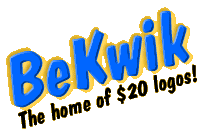
![]()
Virtually
Free Logo Design
Logo Samples
Low
Cost Logos FAQ
Why Low Cost Logos?
Testimonials
![]()
Virtually
FREE Logo Design!
Includes
E-book: How to Create Fortune
on the Internet with 4 Simple Steps
worth $37
Get
it when you order a logo from us! ![]()
FREE
Report: How to Create Brand Awareness without
Mass Advertising
Get it FREE when you subscribe to our cutting edge newsletter "Brand your Business" below!
![]()
Logo
Design Articles
Branding Articles
Marketing
Articles
Design Articles
Printing
Articles
Logo Design Software
Logo
design Books![]()
Order
NOW - We accept: ![]() .
.
![]() .
.![]()
![]() .
.
![]() .
. ![]()
|
|
How to Prepare Images for Your Web Site – Part 1Copyright 2002 Herman Drost You are staring at the your monitor waiting for the image to download. It finally appears but it has blurry edges. You go to the next page but can't read the text because of the dark image in the background. The next page has animated images, that don't seem to stop. The spinning globes keep spinning. The last page has a large graphic on it, which is a link. You click on it for more information but it goes nowhere. You leave the site in frustration. Images are an essential ingredient for Web Site design. You want visitors to have an aesthetically pleasing experience. Properly preparing your images is necessary to enhance the appearance of your web site. In Part I of this article I will explain: When
to use images for your web site. When to use images for your web site - Navigation Graphical buttons can link to other pages or resources. Image Maps – this is a graphic that contains several links on it. It has several "hot spots" or invisible buttons, you can click on. For example you could have a photograph of your family and put a hot spot on each person's face that links to that person's web site. Logos and Trademarks – your business or organization's trademark are crucial for name recognition and branding. Thumbnails – this is a small, "thumbnail-sized version of an image. When you click on it, you jump to another page with a larger version of the same image. The visitor can see many different, small images on the first page without having to wait for larger files of the larger images to load. What are the different image file formats? Web graphics can be categorized into two file formats: bitmap and vector. Bitmap – these are composed of individual values for each color displayed. The larger the dimensions of the image, the larger the associated file size will be for the same graphic. When viewed with magnification, a bitmap resembles a series of little squares, each of which has a color value that contributes to the overall shape. Bitmaps have a very rough appearance when viewed closely but form images when viewed from a distance. Bitmaps are best suited for photos, drop-shadow effects and soft, glowing or blurry edges. Vector – these store information about the image in mathematical instructions that are then interpreted and displayed. Vector graphics are best suited for line art, shapes and illustrations. Image
File Formats Graphics
Interchange Format (GIF) GIF is considered a "lossless" format. This means that as the image is compressed, no information is lost. Types
of GIFs Transparent
GIF Interlaced
GIF When
to use a GIF Joint
Photographic Experts Group (JPEG) When to use a JPEG JPEG enables you to use brilliant colors and provides support for complex images and digitized photographs but it is not designed for use with simple images. JPEG compression is not as effective as GIF compression and may distort images with few colors or large areas of the same color. JPEG compression is therefore not designed for low-resolution images. Portable
Network Graphics (PNG) When
to use a PNG Knowing what types of graphics to use and when to use them for your web site will help you avoid the many pitfalls of bad web design. Part 2 of this article will discuss how to optimize graphics for your web site and factors that affect optimization. Herman Drost is a Certified Internet Webmaster (CIW) owner and author of iSiteBuild.com Low Cost Hosting and Site Design (http://www.isitebuild.com/sitehosting.htm) |